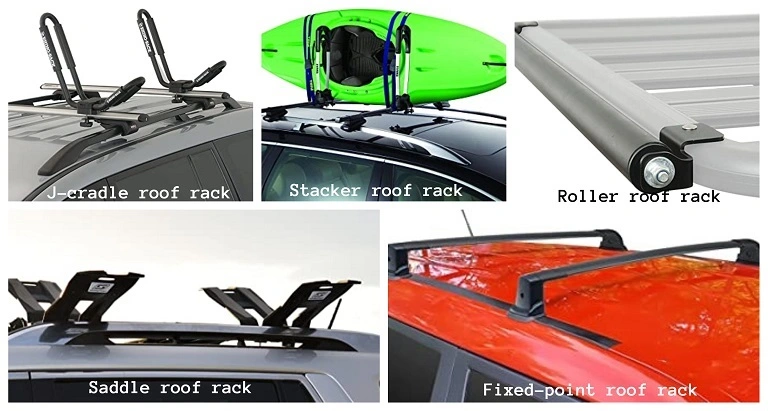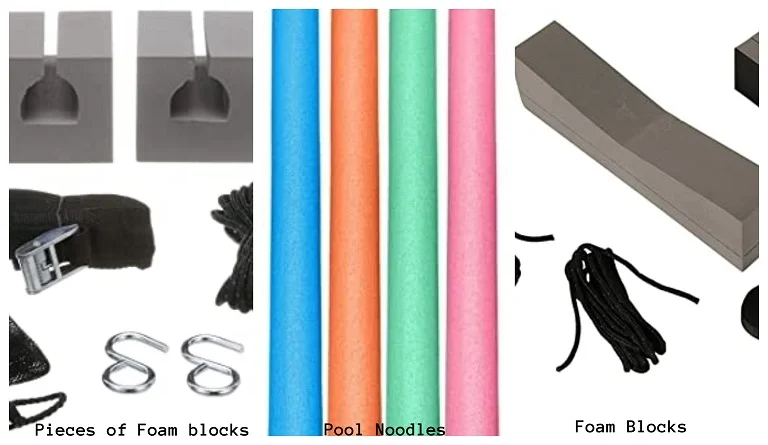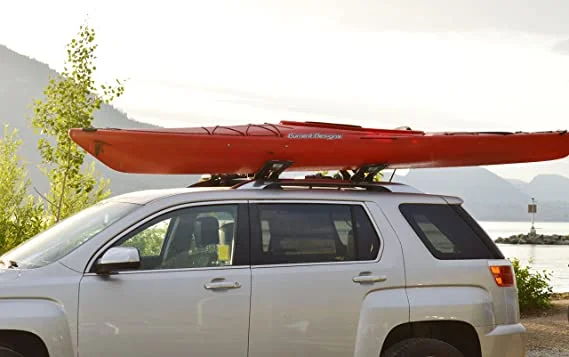Kayaking is a popular outdoor activity that provides a fun and exciting way to explore the water. However, transporting a kayak can be a challenging task, especially if you don’t have the right equipment or knowledge.
Whether you’re planning a day trip to a nearby lake or a multi-day adventure on a remote river, knowing how to transport your kayak safely and securely is essential.
In this article, we will discuss the different methods of transporting a kayak, including using a roof rack, a trailer, or foam blocks, and provide tips and guidelines to help you transport your kayak with confidence and ease.
Table of Contents
Methods of transporting a kayak
There are several methods for transporting a kayak, including:
- Roof racks: Roof racks are a popular way of transporting kayaks. They are mounted on top of the vehicle and come in various styles and sizes. Kayaks are secured to the roof racks with straps or other fastening devices.
- Trailer: If you have multiple kayaks or a larger kayak, a trailer may be a better option. Trailers are designed specifically for carrying kayaks and can be attached to the back of your vehicle.
- Pickup truck: If you have a pickup truck, you can transport your kayak in the bed of the truck. Make sure to secure the kayak with straps or other fastening devices to prevent it from shifting during transport.
- Kayak cart: If you need to move your kayak short distances, a kayak cart can be a useful tool. These carts have wheels and allow you to roll your kayak to the water’s edge.
No matter which method you choose, always make sure to properly secure your kayak before transporting it to ensure your safety and the safety of other drivers on the road.
Types of roof racks for transporting kayaks

There are several types of roof racks available for transporting kayaks. Some of the most popular types are:
J-cradle roof rack
A J-cradle roof rack is a popular type of roof rack that holds the kayak on its side in a “J” shape. This type of rack allows you to transport one or two kayaks on their side, which can be helpful if you have a narrow roof.
Saddle roof rack
A saddle roof rack is a type of roof rack that uses padded brackets to hold the kayak in place. This type of rack allows you to transport the kayak in an upright position, which can be helpful if you have a wider roof.
Stackers roof rack
A stackers roof rack is a type of roof rack that allows you to transport multiple kayaks on their sides. This type of rack allows you to stack kayaks on top of each other, which can be helpful if you need to transport more than two kayaks.
Rollers roof rack
A rollers roof rack is a type of roof rack that uses padded rollers to help you load the kayak onto the roof of the car. This type of rack can be helpful if you have a heavier kayak or if you have trouble lifting the kayak onto the roof.
Fixed-point roof rack
A fixed-point roof rack is a type of roof rack that attaches directly to the roof of the car. This type of rack is often more stable than other types of roof racks, but it can be more difficult to install.
When choosing a roof rack for transporting kayaks, consider the size and number of kayaks you plan to transport, as well as the type of vehicle you will be using. Make sure to properly secure the kayaks to the roof rack before traveling.
How to transport a kayak on the roof rack
Transporting a kayak on a roof rack requires proper preparation and secure attachment to ensure safe travel. Here are the steps to follow:
- Check the roof rack: Make sure the roof rack is in good condition and properly installed on the vehicle. The kayak’s weight can damage the roof rack, so it is important to ensure it is secure and sturdy.
- Prepare the kayak: Remove any loose items from the kayak, such as paddles or personal belongings. Make sure the kayak is clean and dry to prevent any mold or mildew from forming during transport.
- Position the kayak: Position the kayak on the roof rack so that it is centered and evenly balanced. The kayak should be positioned parallel to the vehicle with the bow facing forward. Use the kayak’s grab handles to lift and position it on the roof rack.
- Secure the kayak: Use straps or ropes to secure the kayak to the roof rack. Run the straps or ropes over the kayak, under the roof rack bars, and back over the kayak. Tighten the straps or ropes until the kayak is snugly secured to the roof rack. Make sure the straps or ropes are not twisted and the kayak is not sliding or moving.
- Double-check: Before driving off, double-check that the kayak is securely attached to the roof rack. Give it a gentle tug to make sure it’s not going to move. Check that the straps or ropes are tight and not loose or twisted.
Transporting a kayak on a roof rack can be a safe and convenient way to transport your kayak to your destination. With proper preparation and secure attachment, you can safely transport your kayak to your destination.
How to transport a kayak on the roof without a rack

Transporting a kayak on a roof without a rack requires some improvisation and careful planning to ensure the kayak is safely secured. Here are the steps to follow:
There are several methods that can be effective to transport a kayak on the roof of your car without a roof rack.
- Using foam block: In simple words just putting two foam blocks under the kayak on the roof of your car you can carry your kayak to your destinations.
- Pool noodles method: The pool noodles method is also similar to the foam block method. The only difference is the pool noodle and the foam block for the two methods.
- Using pieces of a slotted foam block: It is also the same as the foam block method but the difference is a full foam block is cut down into two pieces and placed on the side edge of the kayak.
These are the cost-effective methods to transport kayaks on the roof without a roof rack. For more details instructions you can read our other article which will guide you on how to transport kayaks on the roof without a roof rack.
It is important to note that transporting a kayak on a roof without a rack can be risky and potentially dangerous. A roof rack provides additional stability and safety when transporting a kayak. If you plan to transport a kayak frequently, it may be worth investing in a roof rack.
Types of trailers for transporting kayaks
There are several types of trailers available for transporting kayaks. You can transport your kayak, canoe, or other sports item on them. Here are some examples of trailers-
- Kayak trailer: A kayak trailer is a small trailer specifically designed for transporting kayaks. These trailers typically have a narrow profile and a low center of gravity, which makes them ideal for transporting kayaks.
- Canoe trailer: A canoe trailer is a larger trailer designed for transporting canoes, but it can also be used to transport kayaks. These trailers typically have a longer profile and can carry multiple kayaks.
- Multi-sport trailer: A multi-sport trailer is a versatile trailer that can transport kayaks, bikes, and other outdoor gear. These trailers typically have adjustable racks and can be configured to transport kayaks of different sizes and shapes.
- Utility trailer: A utility trailer is a basic trailer that can be used to transport kayaks. These trailers have a flatbed and can be customized with racks or other accessories to secure kayaks.
There are several methods of transporting kayaks on a trailer available. Learn them first before you have them. When choosing a trailer for transporting kayaks, consider the size and number of kayaks you plan to transport, as well as the type of vehicle you will be towing the trailer with. Make sure to properly secure the kayaks to the trailer before traveling.
In conclusion, transporting a kayak can be a daunting task, but with the right equipment and knowledge, it can be done safely and easily. Whether you choose to use a roof rack, a trailer, or foam blocks, it’s important to follow the proper guidelines and take the necessary precautions to ensure that your kayak is secure during transport.
Always double-check that your kayak is properly attached before driving off, and consider investing in high-quality equipment to make the process smoother and more efficient. With these tips and guidelines in mind, you can enjoy your kayaking adventures with peace of mind knowing that your kayak is safely transported to your destination.



Pingback: 12 Kayak Attachments For Dog - Safekayaking